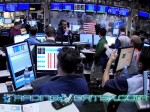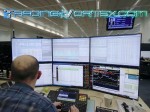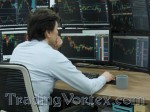Table Of Contents:
- Understanding Forex Trading:
- Forex Market Hours:
- Best Times to Trade Forex:
- Factors Affecting Forex Trading Hours:
- How to Take Advantage of the Best Times to Trade Forex:
- Conclusion and Key Takeaways:
Understanding Forex Trading:
What is Forex Trading?
Forex, short for foreign exchange, is a global decentralized market where currencies are bought and sold. It is the largest financial market in the world, with an average daily trading volume of over $6 trillion.
How Does Forex Trading Work?
Forex trading involves buying one currency while simultaneously selling another currency. The exchange rate between the two currencies is what determines the value of the trade. Forex traders aim to profit from fluctuations in exchange rates, which can be influenced by a variety of factors such as economic data releases, political events, and market sentiment.
When is Forex Trading Open?
The Forex market is open 24 hours a day, five days a week, starting on Sunday evening in Asia and closing on Friday evening in New York. This means that Forex traders can enter and exit trades at any time during the week, which makes it a very flexible market to trade.
How to Participate in Forex Trading?
To participate in Forex trading, traders can use a variety of financial instruments such as currency pairs, derivatives, and exchange-traded funds (ETFs). Forex brokers offer traders access to the market and provide a trading platform where they can place trades, monitor their positions, and analyze the market.
Risks of Forex Trading:
It's important to note that Forex trading is not a get-rich-quick scheme, and success requires knowledge, discipline, and Risk Management. Traders should be aware of the risks involved and should only trade with money they can afford to lose.
Overall, understanding the Basics of Forex Trading is essential for anyone looking to trade the Forex Markets. With a solid foundation in place, traders can then focus on the best times to trade Forex to maximize their profits.
Forex Market Hours:
The Forex market operates 24 hours a day, five days a week, allowing traders to trade currencies at any time. However, not all hours are equal, and some are better than others for trading. Understanding the Forex Market Hours is crucial to developing a profitable Forex Trading Strategy.
Major Trading Sessions:
There are four major trading sessions in the Forex market, which correspond to the opening hours of the major financial centers around the world. These sessions are:
- Sydney session: 10 pm to 7 am GMT
Tokyo session: 12 am to 9 am GMT
London session: 8 am to 5 pm GMT
New York session: 1 pm to 10 pm GMT
Each session has its own unique characteristics in terms of trading volume, liquidity, and volatility.
Sydney Session:
The Sydney session starts at 10 pm GMT and is characterized by low trading volumes and volatility. This session is often referred to as the “Quiet” time in the Forex market. Although trading activity is relatively low during this session, it can be an excellent opportunity for traders who prefer a calm trading environment.
Tokyo Session:
The Tokyo session starts at 12 am GMT and is characterized by moderate trading volumes and volatility. This session is often referred to as the “Asian” session and is considered the best time to trade the Japanese yen.
London Session:
The London session starts at 8 am GMT and is characterized by high trading volumes and volatility. This session is often referred to as the “European” session and is considered the most active trading session in the Forex market. It is also the best time to trade the British pound, as well as the Euro.
New York Session:
The New York session starts at 1 pm GMT and is characterized by high trading volumes and volatility. This session is often referred to as the “American” session and is considered the second most active trading session in the Forex market, after the London session. It is also the best time to trade the US dollar.
The Role of Time Zones in Forex Trading:
The foreign exchange market is a truly global market, with traders from all over the world participating in it. As a result, it operates around the clock, 24 hours a day, five days a week. One of the key factors that makes this possible is the concept of time Zones.
The world is divided into different time zones, each of which is based on the position of the sun. As a result, the time in one time zone may be significantly different from the time in another time zone. This has a direct impact on the Forex market, as the market is open at different times in different parts of the world.
The major Forex trading centers are located in different time zones, with the largest being located in London, New York, Tokyo, and Sydney. As a result, the Forex market is active 24 hours a day, with trading sessions overlapping one another.
Understanding the role of time zones is critical for Forex traders, as it can have a significant impact on the timing of trades. For example, a trader in New York may be able to trade the EUR/USD currency pair during the New York session, but may not be able to trade it during the Asian or European sessions, as these sessions may occur outside of normal business hours.
Furthermore, the time zone in which a trader is located can also affect their ability to trade effectively. For example, a trader located in Europe may find it difficult to trade during the New York session, as this session may occur during the middle of the night in their local time zone.
In order to trade effectively in the Forex market, it is important for traders to understand the different time zones and trading sessions, and to adjust their Trading Strategies accordingly. This may involve monitoring the market during different sessions, or adjusting trading hours to align with the most active trading sessions in their local time zone.
How Forex Trading Hours Vary by Region?
In general, the Forex market is open 24 hours a day, five days a week from Sunday at 5 p.m. Eastern Time (ET) until Friday at 5 p.m. ET. However, this does not mean that all trading hours are created equal.
The Forex market is made up of multiple trading sessions, each with their own unique characteristics. As previously described, the four major trading sessions are the Sydney session, the Tokyo session, the London session, and the New York session. Each session is associated with a different time zone, which can impact the level of activity and volatility in the market.
The Sydney session, which opens at 5 p.m. ET, is relatively quiet compared to the other sessions, with less volatility and fewer trading opportunities.
The Tokyo session, which opens at 7 p.m. ET, sees increased activity and volatility as traders from Japan, Australia, and other Asian countries enter the market.
The London session, which opens at 3 a.m. ET, is the most active and liquid session, as traders from Europe and the UK enter the market. This session also overlaps with the end of the Tokyo session, creating a period of increased volatility known as the “London-Tokyo overlap”.
The New York session, which opens at 8 a.m. ET, is also highly active and liquid, as traders from the US and Canada enter the market. This session overlaps with the end of the London session, creating another period of increased volatility known as the “New York-London overlap”.
It's important to note that these are just general trends and that market activity and volatility can vary from day to day. However, understanding how Forex trading hours vary by region can help you identify the best times to trade based on your trading strategy and goals.
Overlap between Trading Sessions:
The overlap between two trading sessions occurs when both sessions are open at the same time. This overlap is significant because it increases the volume and liquidity of the market. The two most important trading sessions in the Forex market are the London and New York sessions. The overlap between these two sessions is considered the most active period of the day and offers the best opportunities for traders.
During the London-New York overlap, the market is not only more active, but also more volatile. This increased volatility can lead to larger price movements and potentially greater profits for traders who can manage their risk effectively.
However, it is important to note that increased volatility also means increased risk, so traders need to be careful and use appropriate Risk Management strategies during these times.
Other overlaps between trading sessions also occur in the Forex market. For example, there is an overlap between the Tokyo and London sessions, which is active during the Asian session. This overlap is less volatile than the London-New York overlap but still offers good trading opportunities.
In general, it is important for traders to be aware of the overlap between trading sessions and to adjust their Trading Strategies accordingly. Trading during the most active periods can be more profitable, but it can also be riskier. By understanding the characteristics of each trading session and the overlaps between them, traders can make more informed decisions and improve their chances of success in the Forex market.
In summary, understanding the Forex market hours is essential to developing a profitable trading strategy. The major trading sessions, the role of time zones, regional differences in trading hours, and the overlap between trading sessions are crucial factors to consider when deciding when to trade Forex. By being aware of these factors, traders can maximize their profits and minimize their risks in the Forex market.
Best Times to Trade Forex:
As discussed earlier, the Forex market operates 24 hours a day, five days a week. However, not all trading hours are created equal. Some times offer better opportunities for trading than others, depending on factors such as liquidity, volatility, and market conditions. Here are some of the best times to trade Forex:
When to Trade Forex for Maximum Liquidity?
The Forex market is known for its high liquidity, meaning there are always plenty of buyers and sellers ready to trade at any given time. However, there are specific times when liquidity is at its highest, which can be advantageous for traders looking to enter or exit a position quickly.
One of the best times to trade Forex for maximum liquidity is during the overlap of the major trading sessions. For example, when the Asian session is ending and the European session is beginning, there is usually a Spike In Liquidity as traders from both regions are active in the market. Similarly, when the European session is ending and the American session is beginning, there is another period of increased liquidity.
It's also worth noting that liquidity tends to be higher during the middle of the week, particularly on Tuesday, Wednesday, and Thursday. Mondays and Fridays can be less liquid, as traders are often catching up from the weekend or winding down for the week.
The most liquid time of the day is during the overlap of the European and US trading sessions, which occurs between 8:00 am and 12:00 pm EST. During this time, traders can expect high trading volume and tight spreads, making it easier to execute trades and enter and exit positions.
When to Trade Forex for Maximum Volatility?
Volatility refers to the degree of price movement in the market, and it can be both an opportunity and a risk for traders. When volatility is high, there is the potential for large profits, but also for significant losses. On the other hand, when volatility is low, there may be fewer opportunities for profit, but the risk of significant losses is also reduced.
Some of the best times to trade Forex for maximum volatility are during the release of economic data, such as employment reports, GDP figures, or central bank decisions. These events can cause significant price movements in the market, and traders who are positioned correctly can capitalize on these moves.
Another period of increased volatility is during the overlap of the major trading sessions, as mentioned earlier. Traders who are comfortable with higher levels of risk may choose to trade during these times to take advantage of the potential for larger price movements.
The most volatile time of the day is typically during the overlap of the Asian and European trading sessions, which occurs between 2:00 am and 4:00 am EST. During this time, news releases from Asia and Europe can cause significant price movements, providing opportunities for traders to profit.
When to Avoid Trading Forex?
While there are many good times to trade Forex, there are also times when it's best to stay on the sidelines. These include:
- Market holidays: One of the most important times to avoid trading is during major holidays, particularly when markets in multiple countries are closed. During these times, liquidity and volatility can be significantly reduced, which can make it difficult to enter or exit a position at a desired price.
Major news releases: Economic reports, central bank announcements, and other major news events can cause significant volatility in the Forex market, leading to unpredictable price movements and increased risk.
Weekends: The Forex market is closed on weekends, and trading activity can be low on Fridays as traders close their positions ahead of the weekend.
The Best Hours for Forex Trading:
In addition to the best times for liquidity and volatility, there are also specific hours of the day that may be more advantageous for Forex trading. Generally speaking, the best hours for trading are during the overlap of the major trading sessions, as this is when liquidity and volatility are typically at their highest.
The best hours for Forex trading depend on the currency pair being traded and the trading strategy being used. However, it's also worth noting that certain currency pairs may have specific hours of the day when they are more active. For example:
- The AUD/USD pair may be more active during the Asian session,
- While the EUR/USD pair may be more active during the European session.
However, in general, the most active hours of the day occur during the overlap of the European and US trading sessions, between 8:00 am and 12:00 pm EST.
The Best Days of the Week to Trade Forex:
In addition to considering the best hours to trade, it's also important to consider the best days of the week to trade forex. The forex market operates 24 hours a day, 5 days a week, with trading sessions overlapping each other to provide continuous liquidity. However, not all trading days are equal in terms of volume and volatility. Here are some factors to consider when choosing the best days to trade:
- Avoid trading on weekends: The forex market is closed on weekends, so it's best to avoid trading during this time.
- Mondays: Mondays can be slow due to traders taking a cautious approach after the weekend. As a result, trading volume and volatility may be lower compared to other weekdays.
- Tuesdays and Wednesdays: These days tend to have higher trading volumes and volatility, as traders are more active in the market after the slow start to the week.
- Thursdays: Thursdays can be similar to Tuesdays and Wednesdays in terms of trading activity. However, traders may start to wind down their positions in preparation for the weekend, which could lead to some decrease in volatility in the latter half of the day.
- Fridays: Fridays can be unpredictable, with some traders closing their positions before the weekend and others trying to take advantage of any last-minute market movements. Trading volume and volatility may also decrease as the day progresses and traders start to wind down their positions.
It's important to note that these trends may vary depending on the currency pairs being traded and any major economic events or news announcements that may impact the market. It's always a good idea to keep up with current events and news releases that could affect your trades, regardless of the day of the week.
Generally, the most active days for forex trading are Tuesday, Wednesday, and Thursday.
The Best Months to Trade Forex:
The forex market is active throughout the year, but some months tend to offer better trading opportunities than others. Factors such as seasonal patterns, economic events, and geopolitical developments can all impact market activity.
Here are some of the best months to trade forex:
- January: The start of the year is often a good time to trade forex, as many traders return from holiday breaks and market activity picks up. Additionally, the release of key economic data, such as employment reports, can create volatility in the markets.
- February: February is another good month for forex trading, as many traders return to the market after the Chinese New Year. This can lead to increased trading activity in the Asian session.
- March: March is a particularly active month for forex trading, as it often sees an increase in volatility due to the release of annual financial reports and economic data. The end of the first quarter can also lead to increased trading activity.
- April: April is known for being a good month for forex trading, particularly in the second half of the month. This is due to the start of the new fiscal year in Japan and the release of key economic data, such as GDP reports.
- May: May is a good month for forex trading, particularly in the first half of the month. This is because many European countries have public holidays, which can lead to decreased trading activity and volatility.
- September: September is often a good month for forex trading, as many traders return from summer holidays and market activity picks up. Additionally, the release of key economic data, such as central bank announcements, can create volatility in the markets.
- October: October is another good month for forex trading, particularly in the first half of the month. This is because many companies release their quarterly earnings reports, which can create volatility in the markets.
In conclusion:
Understanding the best times to trade forex is crucial for any trader who wants to maximize their profits and minimize their risks. By being aware of the most liquid and volatile trading sessions, as well as the days and months that tend to offer the most favorable conditions, traders can increase their chances of success. On the other hand, trading during low liquidity periods or at times when market conditions are unfavorable can lead to losses. Therefore, it is essential for traders to conduct regular market analysis and adjust their trading hours accordingly to ensure that they are taking advantage of the best opportunities available.
Factors Affecting Forex Trading Hours:
Successful forex trading requires a thorough understanding of the various factors that influence market conditions, including the specific times of day and days of the week when the market is most active. In addition to these time-based factors, there are several other key factors that can have a significant impact on forex trading hours.
Economic Calendar Events:
One of the most important factors affecting forex trading hours is the economic calendar. This calendar tracks key economic events such as interest rate decisions, employment reports, and GDP releases. These events can have a major impact on market sentiment and can cause significant fluctuations in currency prices.
Traders must carefully monitor the economic calendar and be aware of upcoming events that could potentially impact their trades. It's important to note that some economic events, such as interest rate decisions, are scheduled in advance, while others, such as unexpected political developments, can occur at any time.
News Releases:
Another important factor that can affect forex trading hours is news releases. News releases can range from company-specific announcements to broader economic news, and can have a significant impact on currency prices.
Traders must be aware of upcoming news releases and factor them into their trading strategies. They must also be prepared to react quickly to unexpected news that could impact their trades.
Seasonal Factors:
Seasonal factors can also have an impact on forex trading hours. For example, during the summer months, trading activity tends to slow down as traders take vacations and the overall volume of trades decreases. Similarly, during the holiday season, trading activity may slow down as many traders take time off.
Traders must be aware of seasonal trends and adjust their trading strategies accordingly. It's important to note, however, that these trends can vary from year to year and may not always be consistent.
Trading Volume:
Finally, trading volume is another important factor that can affect forex trading hours. Higher trading volume generally leads to more liquidity and tighter bid-ask spreads, making it easier for traders to execute trades and achieve favorable prices.
Traders must be aware of the times of day and days of the week when trading volume is highest, as these are the times when the market is likely to be most active and volatile. They must also be aware of the times when trading volume is low, as this can lead to wider bid-ask spreads and potentially lower liquidity.
Conclusion:
Understanding the various factors that affect forex trading hours is essential for any trader looking to succeed in the market. By carefully monitoring the economic calendar, staying up to date on news releases, being aware of seasonal trends, and understanding the impact of trading volume, traders can make more informed trading decisions and achieve greater success in the forex market.
How to Take Advantage of the Best Times to Trade Forex:
If you want to maximize your profits in Forex trading, you need to be strategic about when you trade. In addition to understanding the best times to trade based on liquidity and volatility, there are several ways to take advantage of these periods.
Adjusting your Trading Strategy Based on Time of Day:
Adjusting your trading strategy based on the time of day is a crucial element in maximizing profits during forex trading. Here are some factors to consider:
- Market conditions: Different market conditions can affect the way a currency pair moves during different times of the day. For instance, during the Asian session, the market tends to be slower, with less volatility, and limited price movements. It's important to adjust your trading strategy to these conditions by looking for trades with smaller profit targets and stop losses.
- Trading style: Depending on your trading style, you may find that certain times of the day are more suitable for your approach. For instance, Day Traders tend to focus on the more active trading periods of the day, such as during the overlap of the London and New York sessions. On the other hand, Swing Traders may prefer to focus on the quieter periods when the market moves less dramatically.
- Risk tolerance: The time of day you choose to trade can also have an impact on your risk tolerance. For example, during volatile periods, there is a higher chance of experiencing wider spreads and slippage, which can result in greater losses. If you have a low risk tolerance, you may prefer to trade during periods of lower volatility.
- Technical analysis: Adjusting your trading strategy based on technical analysis is also important when trading forex. You can use technical indicators to identify periods of high and low volatility and adjust your trading strategy accordingly. For instance, you may choose to use shorter time frames during high volatility periods to capture smaller moves, or longer time frames during low volatility periods to capture larger moves.
Best Practices for Maximizing Your Profits During Peak Trading Hours:
Peak trading hours are the times when the forex market is most active and offers the greatest opportunities for profit. During these times, the volume of trades and liquidity are at their highest levels. Here are some best practices for maximizing your profits during peak trading hours:
- Focus on high liquidity currency pairs: During peak trading hours, currency pairs with high liquidity, such as the EUR/USD, GBP/USD, USD/JPY, and USD/CHF, tend to have lower spreads and higher trade volumes. This makes them an ideal choice for traders looking to maximize their profits.
- Use technical analysis: Technical analysis is a method of predicting price movements by analyzing market data, such as price charts and volume. During peak trading hours, technical analysis can be particularly effective, as there is a greater amount of data available to analyze.
- Trade with a clear strategy: It is important to have a clear trading strategy in place to maximize your profits during peak trading hours. This includes setting entry and exit points, Stop Loss Orders, and taking profits at predetermined levels.
- Monitor market news and events: During peak trading hours, market news and events can have a significant impact on currency prices. Keep an eye on economic calendars and news releases, and adjust your strategy accordingly.
- Manage risk: While peak trading hours can offer great opportunities for profit, they can also be risky. It is important to manage your risk by using proper position sizing, setting stop loss orders, and avoiding over-leveraging your trades.
Common Mistakes to Avoid When Trading During Off-Peak Hours:
Trading during off-peak hours can be tempting for traders who may not have the flexibility to trade during the busiest trading sessions. However, there are certain risks associated with trading during off-peak hours that traders should be aware of. Here are some common mistakes to avoid when trading during off-peak hours:
- Lack of liquidity: During off-peak hours, trading volume is significantly lower, which can lead to a lack of liquidity. This can result in wider bid-ask spreads, making it harder for traders to execute trades at the desired price. It is important to be aware of the liquidity conditions and adjust your trading strategy accordingly.
- Increased volatility: Although trading volume is lower during off-peak hours, it can also lead to increased volatility. This is because there are fewer market participants, and a single large order can have a greater impact on the market. Traders should be cautious and adjust their risk management strategies accordingly to avoid significant losses.
- News events: Even during off-peak hours, unexpected news events can occur, leading to increased market volatility. Traders should be aware of any upcoming news events and adjust their trading strategy accordingly.
- Overtrading: Trading during off-peak hours can be slow and boring, leading to the temptation to overtrade. Overtrading can lead to emotional decision making and irrational trading behavior, resulting in significant losses. It is important to stick to your trading plan and avoid making impulsive trades.
- Lack of market analysis: Trading during off-peak hours can make it easy to fall behind on market analysis. However, it is important to stay up-to-date on market trends and adjust your trading strategy accordingly. Failure to do so can lead to missed trading opportunities or significant losses.
Importance of Regular Market Analysis and Adjustment of Trading Hours:
As a forex trader, it's crucial to regularly Analyze the Market and adjust your trading hours accordingly. This allows you to stay up to date with any changes that could impact the market, and helps you take advantage of the best trading opportunities.
- Stay Informed: Regular market analysis is crucial to staying informed about changes in market conditions, economic events, and news releases that can impact your trading strategy. Traders should keep a close eye on financial news and reports, such as earnings announcements, economic indicators, and central bank policy statements. By staying informed, traders can make more informed decisions and adjust their trading hours accordingly.
- Adjust Your Trading Hours: As market conditions change, traders should be prepared to adjust their trading hours accordingly. For example, if a trader notices that the market is becoming more volatile during a certain time of day, they may want to adjust their trading hours to take advantage of this increased volatility. Similarly, if a trader notices that the market is quieter during certain hours, they may want to adjust their trading hours to avoid trading during these times.
- Use Technical Analysis: Technical analysis is a powerful tool that traders can use to analyze market conditions and identify potential trading opportunities. By studying price charts, traders can identify trends, support and resistance levels, and other key indicators that can help them make more informed trading decisions. Regular technical analysis can also help traders identify changes in market conditions that may require an adjustment to their trading hours.
- Practice Risk Management: Regular market analysis can also help traders practice effective risk management. By staying informed about changes in market conditions, traders can adjust their trading strategy to minimize risk and maximize profits. Traders should also be aware of their risk tolerance and set appropriate stop-loss orders to limit potential losses.
- Keep a Trading Journal: Finally, keeping a trading journal can be an effective way to track your progress and identify areas for improvement. By recording your trades, you can identify patterns and trends in your trading strategy and make adjustments as needed. A trading journal can also help you stay disciplined and avoid making impulsive trading decisions.
In conclusion:
Taking advantage of the best times to trade Forex requires a combination of knowledge, strategy, and discipline. By understanding the factors that affect trading hours, adjusting your strategy based on the time of day, and staying disciplined during peak and off-peak periods, you can maximize your profits and minimize your risk in this exciting and dynamic market.
Conclusion and Key Takeaways:
Recap of the best times to trade forex:
In summary, the best times to trade forex are during the overlapping trading sessions when multiple financial centers are active. The most liquid and volatile sessions are the London and New York sessions, which occur between 8:00 AM and 12:00 PM EST. The Asian trading session can also provide opportunities for traders, particularly for those who prefer a more relaxed trading environment.
Importance of timing in forex trading:
Understanding the best times to trade forex is crucial for maximizing profits and minimizing risks. By trading during peak market hours, traders can take advantage of high liquidity and volatility, which can result in more significant profits. On the other hand, trading during off-peak hours can be riskier as the market is less active and price movements may be less predictable.
Final thoughts and recommendations:
To become a successful forex trader, it is crucial to develop a Trading Strategy that considers the best times to trade forex. Additionally, traders should regularly analyze the market and adjust their trading hours accordingly. While trading during peak market hours can be profitable, it is also important to exercise caution and implement risk management strategies to minimize potential losses. Finally, traders should remain patient and disciplined, avoiding the temptation to make impulsive trades during off-peak hours.
In conclusion:
Mastering the art of timing in forex trading is a crucial component of becoming a successful trader. By understanding the best times to trade forex and implementing a sound trading strategy, traders can take advantage of market opportunities and achieve their financial goals.








































 TradingVortex.com® 2019 © All Rights Reserved.
TradingVortex.com® 2019 © All Rights Reserved.